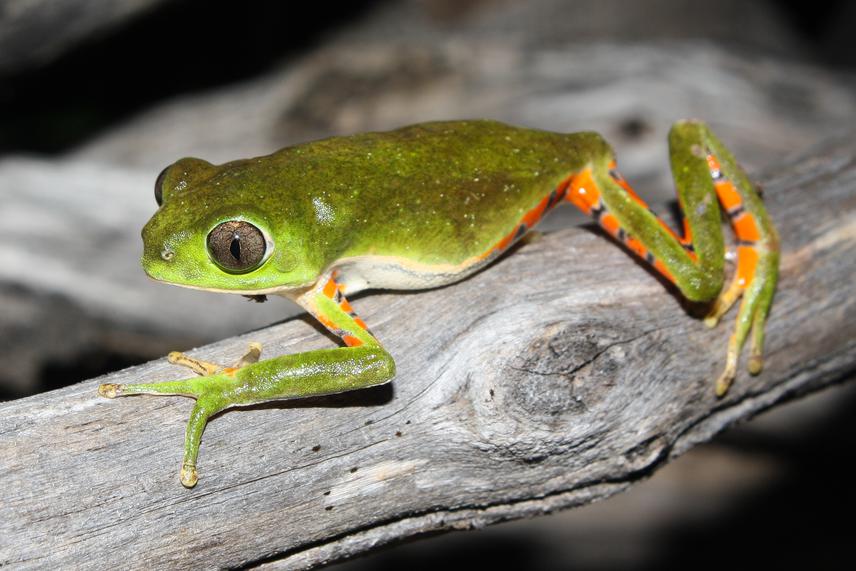Lucas Nicioli Bandeira
Other projects
20 Dec 2017
The Role of Ecological Niche Evolution on the Diversification of Neotropical Tree Frogs and Potential Impacts of Climate Change
First, the study will bring new insights into the biodiversity patterns of the Neotropical region and bring light to key issues in areas such as evolutionary biology, biogeography, and macroecology. With the development of the study there is a possibility of advances in understanding the origins of these patterns and, given emphasis in the diversification, the potential processes and mechanisms involved. Secondly and still in the field of novelties, the idealization, conceptualization and development of the ecological lability index - ELI and its joint application to the prediction process for future scenarios (which is also a novel methodological approach) constitute one of the main objectives of this project.

P. nordestinus. ©Roberto Leonam Morim Novaes.
Since the effects of climate change on populations of the most diverse species is real, quantifying the magnitude of these effects on species is vital. Particularly, for anurans that are organisms highly vulnerable to environmental changes such impacts can be dramatic leading to the massive extinction of species (many of which are still unknown). Given the importance of this scenario, it becomes clear and promptly justified the need to use increasingly refined data in the approaches of questions of this nature and techniques that describe (or model) the phenomenon of interest in the most credible way possible. However, due to some methodological limitations and theoretical constraints, access to the effects of environmental changes is still presented without the absence of failures, which compromises the application of the results robustly in public policies and conservation planning.
In recent years, given the massive advances in techniques used in investigations of such issues, we have noted the possibility of improved predictions and hence a more reliable access to the impacts of climate change on species, although the development of a specific methodology has not yet been built. Taking advantage of this here, through of the consideration of the behaviour of the ecological entity of the niche throughout the evolutionary history of each species (the theoretical essence of the ELI) and its application in the routine of predictions for future scenarios, we intend to obtain more real potential distribution models which will guarantee the construction of robust inferences and in more effective conservation measures.